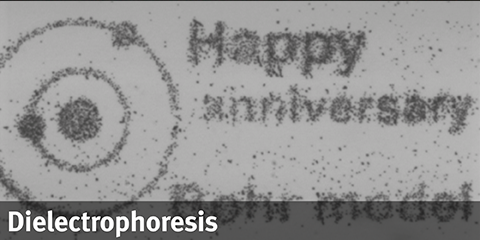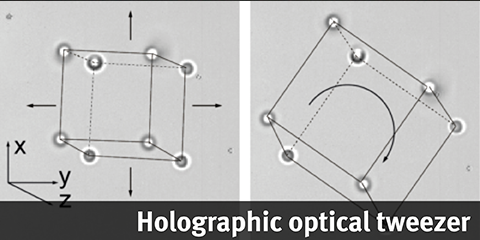.nano
The possibility of controlling matter in the micro- and nanometer range, i.e. trapping, manipulation, structuring and assembly is crucial for a deeper understanding of the physical features of microscopic particles as well as have remarkable potential in the field of micro/nanotechnology. In our group, we are interested in the development and application of light-assisted manipulation approaches for trapping and assembling microscopic particles into larger functional structures. Typical examples for microparticles are non-living objects as micro/nano tools and nanocontainers and living organisms as cells and bacteria [1]. On the one hand, the characteristic behavior of particles in optical traps at defined scenarios allow extracting information of elemental physical properties of the particles but also of their mutual reaction and their interaction with the environment. On the other hand, structuring and assembly in small scales can also induce remarkable macroscopic properties. To address these issues, we have implemented mainly two complementary approaches for micromanipulation and arrangement of particles: holographic optical tweezers and optoelectronic tweezers. The understanding and exploitation of the properties of these microscopic assemblies can be the key for the development of fully novel materials and/or micro/nano devices.

[1] Advanced optical trapping by complex beam shaping, M. Woerdemann, C. Alpmann, M. Esseling, C. Denz, Laser Photonics Rev. 7, 2013, 839–854




